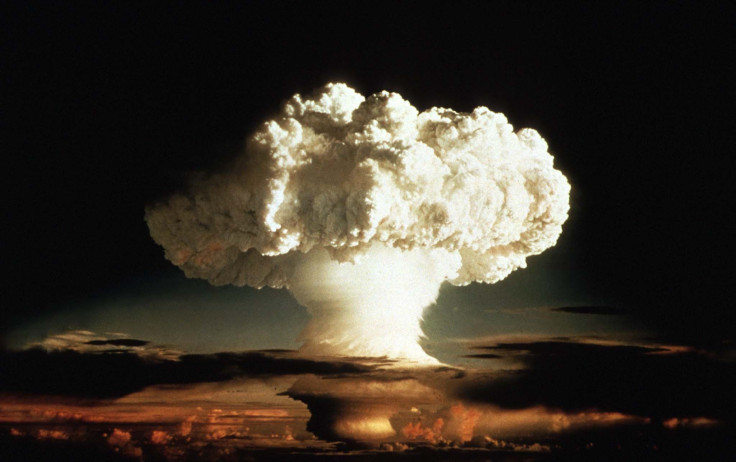North Korea War? How A Hydrogen Bomb Works And Facts About The Deadly Blast Radius

World leaders scrambled Wednesday to investigate claims from North Korea that it had developed a hydrogen bomb in violation of United Nations Security Council resolutions. While the communist country has some level of nuclear capability, it wasn't immediately clear that they had successfully built a working atomic bomb.
The White House said its intelligence "calls into serious question those claims," while the head of the International Atomic Energy Agency called a potential hydrogen bomb test a clear violation of U.N. Security Council resolutions that “is deeply regrettable." So what exactly is a hydrogen bomb, and what is its blast radius?
A hydrogen bomb is a powerful weapon that could threaten North Korea's neighbors and global security. The bomb produces a much stronger blast than the atomic bombs used to level Hiroshima and Nagasaki during World War II that killed more than 200,000 people, NBC News reported.
Atomic weapons are plutonium-based and involve a process called fission that splits plutonium into smaller atoms, releasing massive amounts of energy. Hydrogen bombs are made with uranium. Instead of splitting big atoms, it combines small atoms to release a massive nuclear force hundreds of times more powerful than an atomic weapon.
The official Korea Central News Agency claimed Tuesday it had successfully donated a "self-reliant [atomic] bomb and [hydrogen] bomb to reliably defend its sovereignty and the dignity of the nation."
North Korea has carried out nuclear bomb tests since at least 2006 and has been subject to United Nations sanctions banning trade and financing activities because of its weapons program. While a handful of countries have nuclear capabilities, including the United States, Russia and China, only North Korea has conducted nuclear tests since 1999, CNN reported.
Few details were immediately known about the power of North Korea's bomb. Russia's Tsar Bomba, the biggest bomb ever designed, is 100 megatons and reportedly has a fireball radius of 1.88 miles and a radiation radius of 4.65 miles. Its thermal radiation radius, which would cause third-degree burns to any exposed skin, is 47.88 miles. Built during the Cold War, it was considered about 1,400 times more powerful than Hiroshima and Nagasaki, with 10 times the punch of the entire combined fire power expended in World War II.
Even China, a close ally of North Korea, has warned about the implications of the reclusive nation developing a hydrogen bomb. "The situation on the Korean peninsula is very delicate, complex and fragile," Chinese Foreign Ministry spokeswoman Huan Chunying told reporters. "We hope all concerned will make effort that contributes to peace and stability."
© Copyright IBTimes 2024. All rights reserved.





















